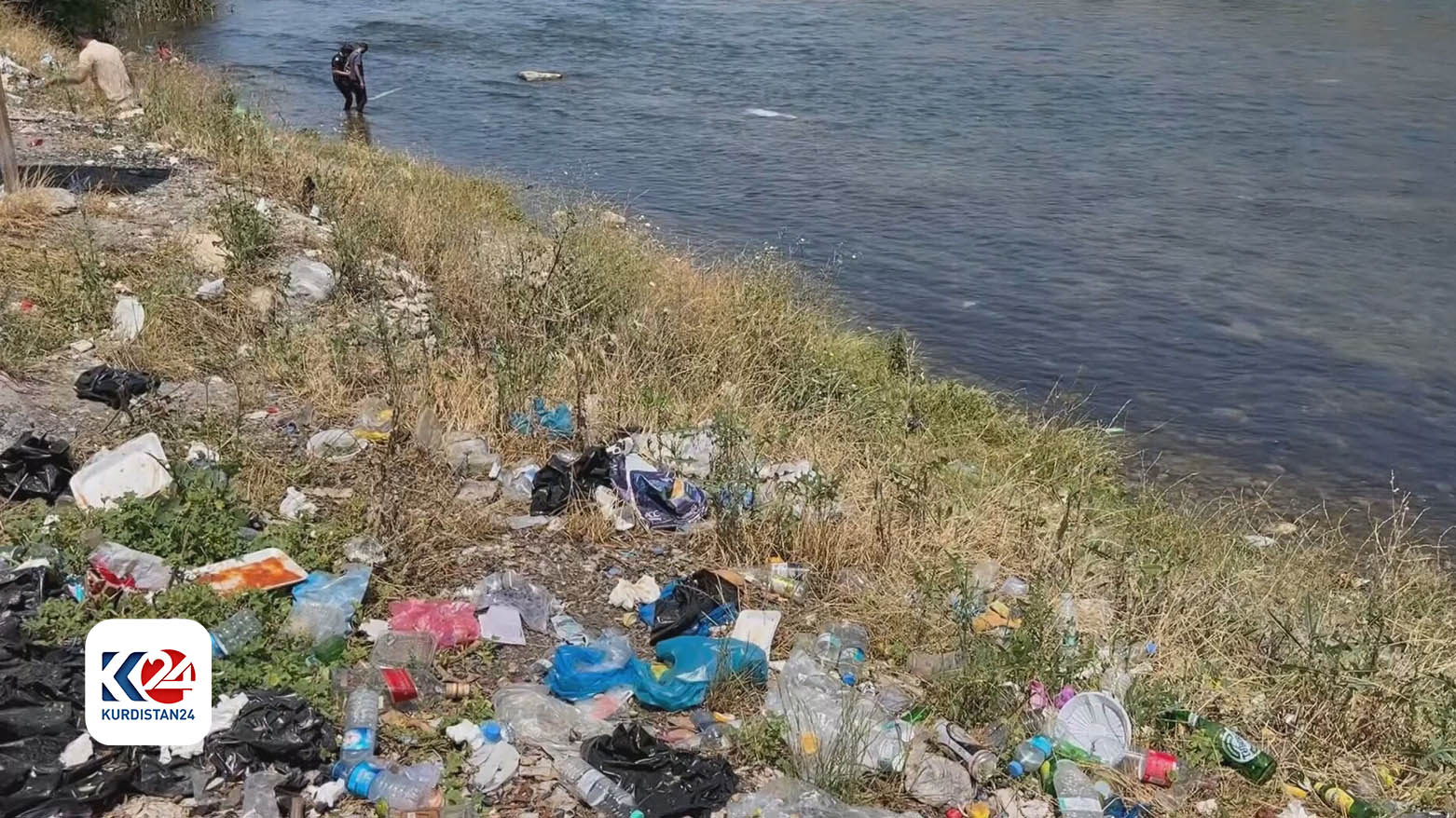Environmental pollution emerges as prevalent concern at Kurdistan Region tourist attractions
Dukan Lake is a popular tourist destination, attracting many visitors every year. However, the actions of some tourists have resulted in environmental pollution in the area, including the water from the Dukan Dam.

ERBIL (Kurdistan24) – Dukan Lake attracts many tourists annually. However, there has been an ongoing issue of environmental pollution caused by some tourists.
Dukan Lake is a popular tourist destination, attracting many visitors every year. However, the actions of some tourists have resulted in environmental pollution in the area, including the water from the Dukan Dam. This has sparked a series of protests.
Diler Marf, a tourist, told Kurdistan24: "I have lived abroad for many years. In some countries, if someone throws something on the street, the locals will confront them and say, 'You have littered. Please help protect our environment.' It's important not to dump trash and avoid spreading it around. By spreading waste, you are contributing to the spread of diseases."
Protecting the environment is not solely the responsibility of the government and other institutions; it is also an important duty of citizens. However, some citizens argue that maintaining a clean environment is a civilized task and insist that those who pollute the environment should also bear responsibility.
Keeping the environment clean is important, but protecting the environment of tourist areas is even more crucial. This is because these areas, along with all other tourist destinations, serve the needs of citizens.
Despite hurdles such as the war on ISIS and the COVID-19 pandemic, the Kurdistan Region’s tourism industry has expanded, with six million tourists visiting in 2022. In 2023, seven million tourists were recorded, equaling a 16% increase from the previous year.
The Kurdistan Regional Government (KRG), as part of its Ninth Cabinet's agenda, has emphasized the importance of tourism as an alternative to diversifying its reliance on hydrocarbon revenues. The plan includes an 8-year-long strategy to attract 20 million tourists annually.
